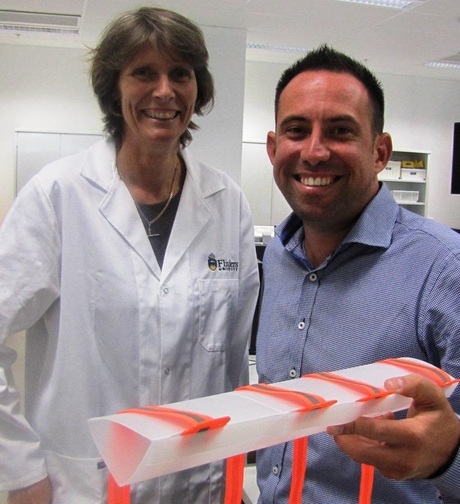Portable splint to be launched this year

With the support of Flinders University’s Medical Device Partnering Program (MDPP), Fluoro Medical will this year launch a foldable splint that can fit into a first aid kit.
The CAS Splint, to be manufactured in South Australia, is intended to be a low-cost alternative to stabilise and support broken limbs. Unlike a traditional cardboard splint, which can exacerbate injuries if applied incorrectly, it is waterproof and compact enough to fit into an everyday first aid kit.
Flinders University medical device experts will soon run trials of the splint in order to help Fluoro Medical through the final development phase. With its design validated, the splint will be the subject of a production project that could see the creation of up to 25 jobs over the next 3–5 years.
“The state government funding — through the Medical Technologies Program — will provide 250 hours of research and development assistance from the Flinders MDPP, together with 30 hours of market intelligence which can be utilised by Fluoro Medical to craft a business case and commercialisation strategy at a later stage,” said South Australian Manufacturing and Innovation Minister Kyam Maher.
Fluoro Medical has also been awarded an Accelerating Commercialisation grant from the Department of Industry, Innovation and Science. The company will put the funding towards manufacturing options, training materials, operational costs and initial production runs, keeping much of the work in South Australia where possible.
ADHD may be linked with an increased risk of dementia
An adult brain affected by attention deficit hyperactivity disorder (ADHD) presents modifications...
Placebos appear to reduce PMS symptoms
Women affected by premenstrual syndrome (PMS) appear to experience less intense and debilitating...
Medicinal cannabis linked to long-term health benefits
As scientists find a way to improve the effectiveness of CBD, a separate study shows that...




